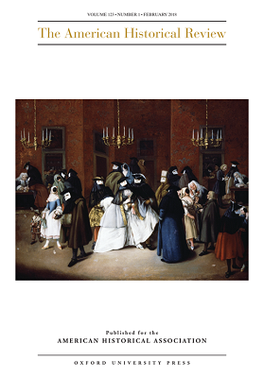
The euro is the official currency of 20 of the 27 member states of the European Union. This group of states is officially known as the euro area or, more commonly, the eurozone. The euro is divided into 100 euro cents.

Eastern Europe is a subregion of the European continent. As a largely ambiguous term, it has a wide range of geopolitical, geographical, ethnic, cultural, and socio-economic connotations. Its eastern boundary is marked by the Ural Mountains, whilst its western boundary is defined in various ways. Most definitions include the countries of Belarus, Russia, Ukraine, Moldova, and Romania while less restrictive definitions may also include some or all of the Balkans, the Baltic states, the Caucasus, and the Visegrád group.
Sinology, also referred to as China studies, is a subfield of area studies or East Asian studies involved in social sciences and humanities research on China. It is an academic discipline that focuses on the study of the Chinese civilization primarily through Chinese language, history, culture, literature, philosophy, art, music, cinema, and science. Its origin "may be traced to the examination which Chinese scholars made of their own civilization."
The Caucasian race is an obsolete racial classification of humans based on a now-disproven theory of biological race. The Caucasian race was historically regarded as a biological taxon which, depending on which of the historical race classifications was being used, usually included ancient and modern populations from all or parts of Europe, Western Asia, Central Asia, South Asia, North Africa, and the Horn of Africa.

The European Physical Journal is a joint publication of EDP Sciences, Springer Science+Business Media, and the Società Italiana di Fisica. It arose in 1998 as a merger and continuation of Acta Physica Hungarica, Anales de Física, Czechoslovak Journal of Physics, Il Nuovo Cimento, Journal de Physique, Portugaliae Physica and Zeitschrift für Physik. The journal is published in various sections, covering all areas of physics.

The European Molecular Biology Organization (EMBO) is a professional, non-profit organization of more than 1,800 life scientists. Its goal is to promote research in life science and enable international exchange between scientists. It co-funds courses, workshops and conferences, publishes five scientific journals and supports individual scientists. The organization was founded in 1964 and is a founding member of the Initiative for Science in Europe. As of 2022 the Director of EMBO is Fiona Watt, a stem cell researcher, professor at King's College London and a group leader at the European Molecular Biology Laboratory.

The American Historical Review is a quarterly academic history journal published by Oxford University Press on behalf of the American Historical Association, for which it is its official publication. It targets readers interested in all periods and facets of history and has often been described as the premier journal of American history in the world.
The University of Wales Press was founded in 1922 as a central service of the University of Wales. The press publishes academic journals and around seventy books a year in the English and Welsh languages on six general subjects: history, political philosophy and religious studies, welsh and Celtic studies, literary studies, European studies and medieval studies. The press has a backlist of over 3,500 titles.

The Journal of Modern History is a quarterly peer-reviewed academic journal covering European intellectual, political, and cultural history, published by the University of Chicago Press. Established in 1929, the journal covers events from approximately 1500 to the present, with a geographical scope extending from the United Kingdom through the European continent, including Russia and the Balkans.

Contemporary European History is an international peer-reviewed academic history journal founded in 1992 and published quarterly by Cambridge University Press. The journal covers the history of Europe from 1914 onwards and publishes three main types of article: research articles, review articles, and Spotlight essays.

Europe-Asia Studies is an academic peer-reviewed journal published 10 times a year by Routledge on behalf of the Institute of Central and East European Studies, University of Glasgow, and continuing the journal Soviet Studies, which was renamed after the dissolution of the Soviet Union. The journal focuses on political, economic and social affairs of the countries of the former Soviet bloc and their successors, as well as their history in the 20th century. Both Europe-Asia Studies and Soviet Studies are available online with subscription via JSTOR from 1949 to 2016 with a 7-year moving wall. The full collection of 76 volumes published from 1949 to 2024 can be accessed on Taylor & Francis.

The Journal of Slavic Military Studies is a quarterly peer-reviewed academic journal that publishes articles relating to military affairs of Central and Eastern European Slavic nations, including their history and geopolitics, as well as book reviews. It is published by Routledge and the editor-in-chief is Martijn Lak. It was established in 1988 by David Glantz as The Journal of Soviet Military Studies, obtaining its current title in 1993. David Glantz was editor-in-chief from the founding of the journal until the end of 2017, with Alexander Hill briefly editing the journal from January 2018-March 2019.

Aspasia: The International Yearbook of Central, Eastern, and Southeastern European Women's and Gender History is an annual peer-reviewed academic journal covering research on women's and gender history in central, eastern, and southeastern Europe. Aspasia was founded in 2006 by Francisca de Haan at the Gender Studies Department of the Central European University and is published by Berghahn Journals. Early editorial board members included the historians Maria Bucur and Krassimira Daskalova.
Nationalities Papers is a peer-reviewed academic journal published by Cambridge University Press for the Association for the Study of Nationalities. The editor-in-chief is Harris Mylonas. It publishes articles on nationalism, minorities, and ethnic conflict, with a regional focus on Central and Eastern Europe, the Balkans, the former Soviet Union, Turkey, and Central Asia. The journal is interdisciplinary, with authors from a variety of backgrounds, including history, political science, sociology, anthropology, and literature. Nationalities Papers started in 1972 and currently publishes 6 issues per year.
Francesco Antonio Santori was an Italian writer, poet and playwright of Arbëreshë descent. His play Emira is considered to be the first original Albanian drama ever written. The main character is a young and innocent girl who becomes a victim. Albanian literature of that time does not present many female characters like Ermira.

The genetic history of Italy includes information around the formation, ethnogenesis, and other DNA-specific information about the inhabitants of Italy. Modern Italians mostly descend from the ancient peoples of Italy, including Indo-European speakers and pre-Indo-European speakers. Other groups migrated into Italy as result of the Roman empire, when the Italian peninsula attracted people from the various regions of the empire, and during the Middle Ages with the arrival of Ostrogoths, Longobards, Saracens and Normans among others. Based on DNA analysis, there is evidence of regional genetic substructure and continuity within modern Italy dating back to antiquity.
Sabrina Petra Ramet is an American academic, educator, editor and journalist. She specializes in Eastern European history and politics and is a Professor of Political Science at the Norwegian University of Science and Technology (NTNU) in Trondheim.











